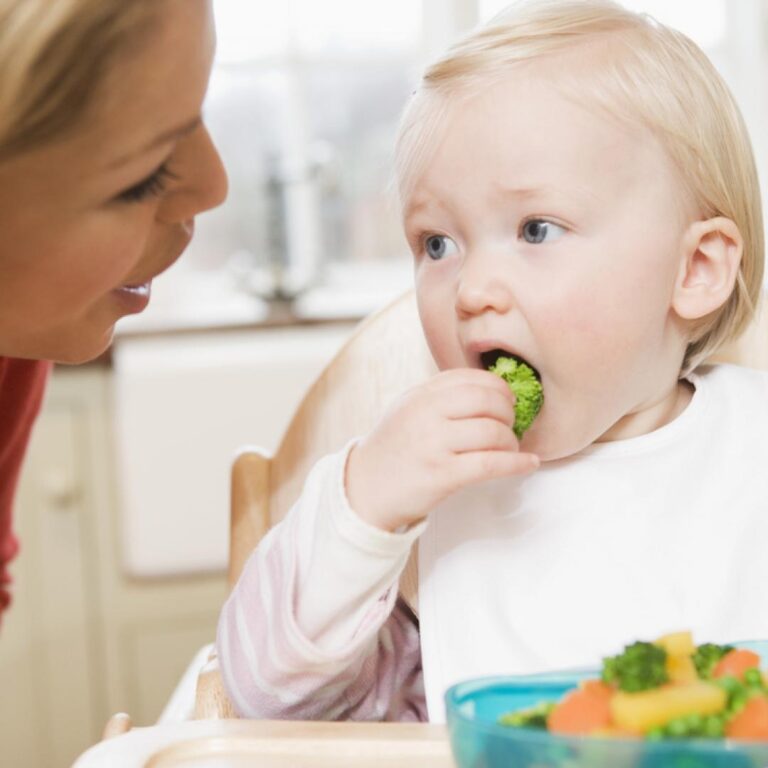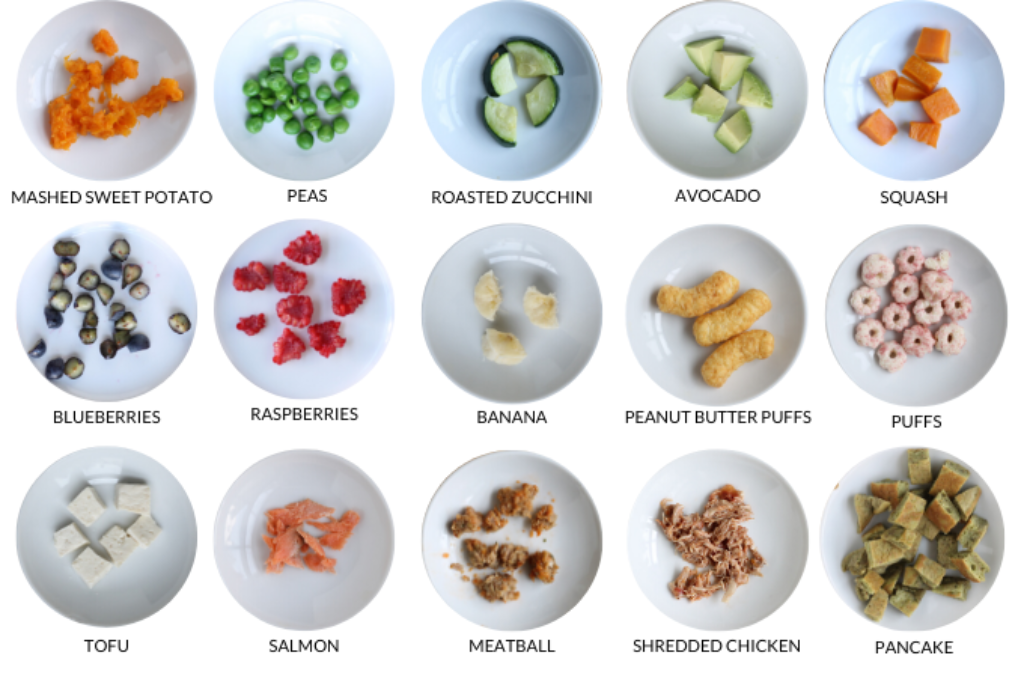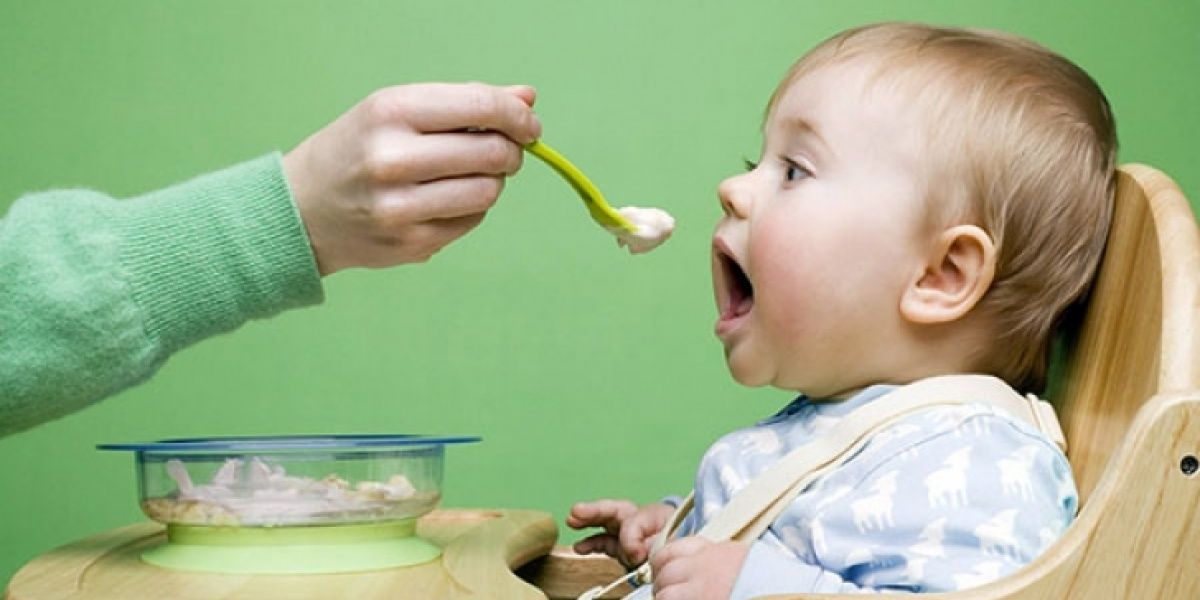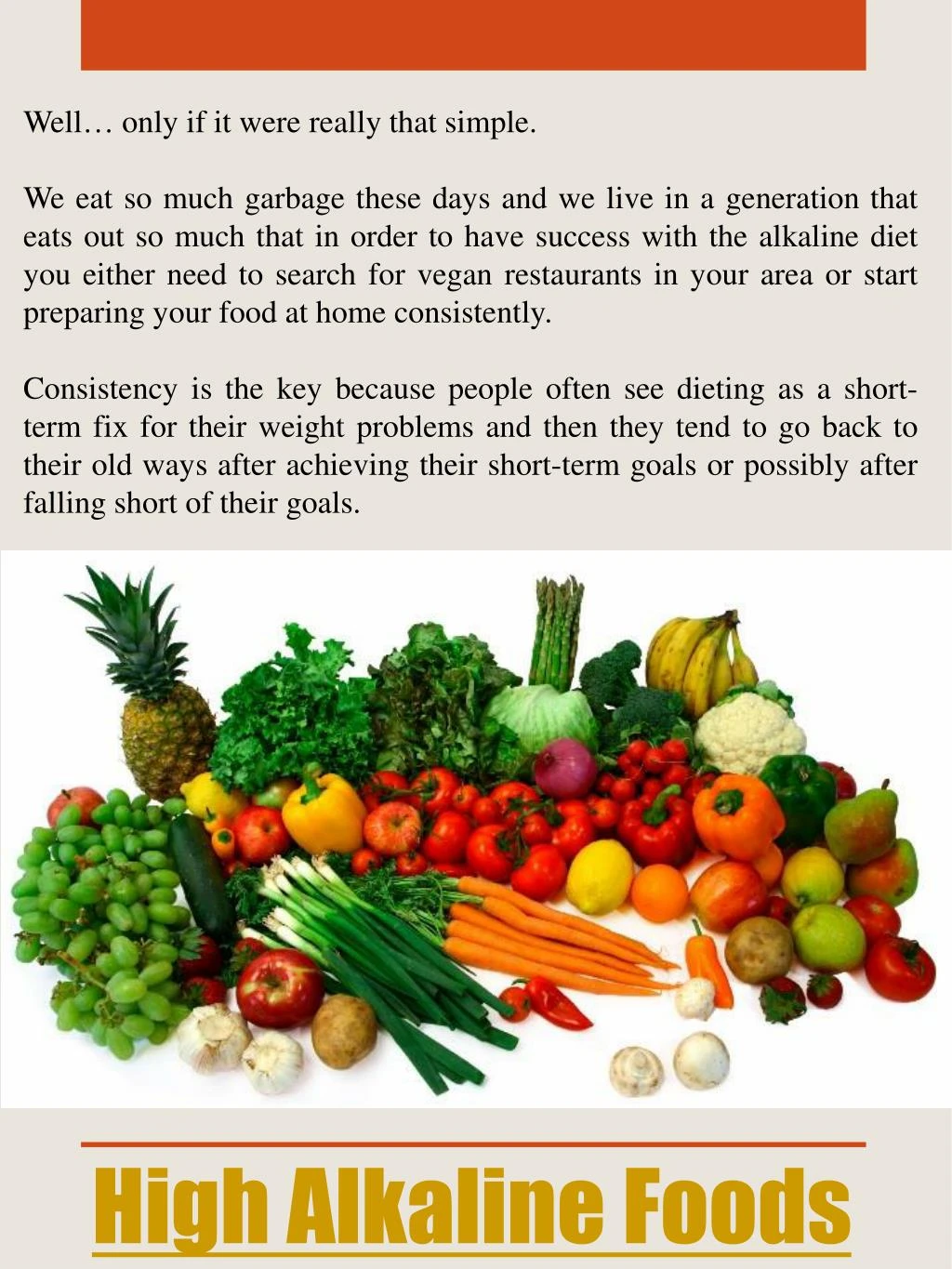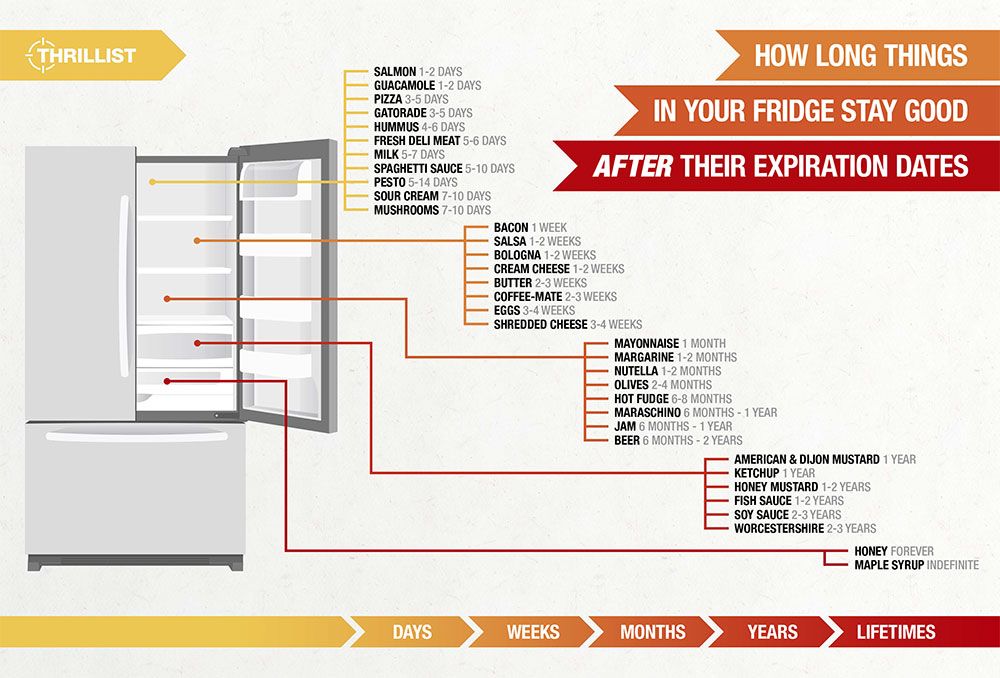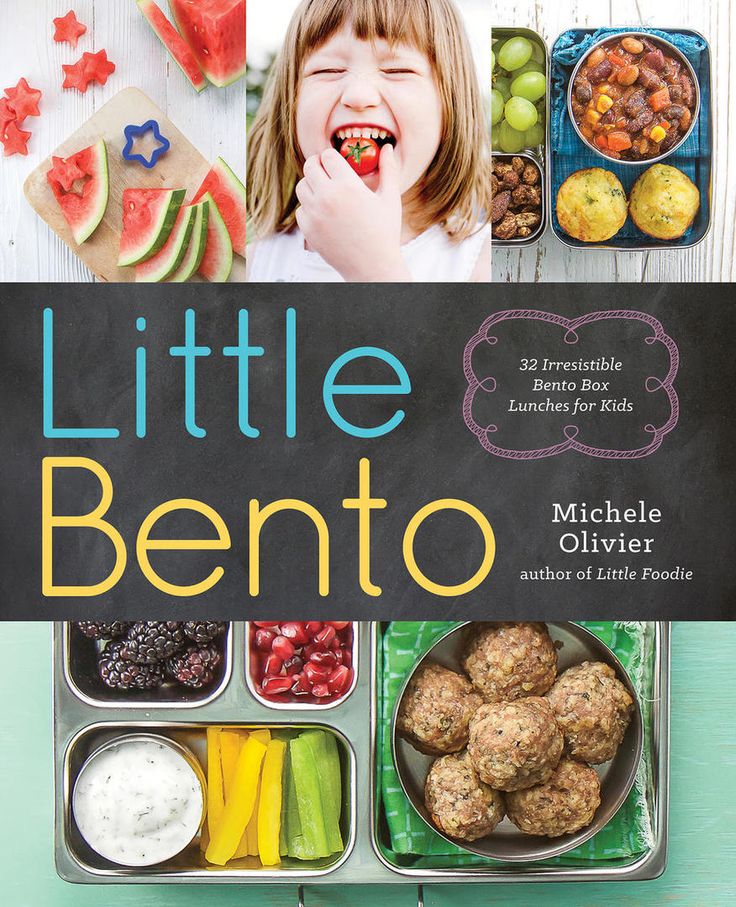Sweet potato baby food side effects
Sweet Potato Baby Food Recipes
If you’re on the hunt for a healthy food for baby boy or girl, you can’t go wrong with the sweetest of carbs, the sweet potato. The amber-hued vegetable is rich in not only carbohydrates but also a number of essential nutrients, including potassium, calcium and a number of vitamins (A, B and C). Nothing but goodness, right?
So when can you introduce sweet potatoes into your baby’s diet, and how do you cook them, anyway? Read on to learn everything you need to know about sweet potatoes for baby. Plus, get two sweet potato baby food recipes to try at home!
What Are the Health Benefits of Sweet Potatoes?
Sweet potatoes have a long list of health benefits, including a healthy mix of nutrients, vitamins and antioxidants. The vitamin C and iron levels in sweet potatoes can help to boost the immune system, while the magnesium and potassium (an electrolyte) benefit heart health. And while sweet potatoes are a carbohydrate, they’re a complex carb that releases sugars slowly into the bloodstream, so no worries about spikes here. And they’re high in carotenoids like beta-carotene, which can help ward off cancer.
When Can I Introduce Sweet Potatoes Into My Baby’s Diet?
You can introduce sweet potatoes, a stage one food, into baby’s diet around 6 months of age–around the same time you can introduce most solid foods into a baby’s diet.
What to Look for When Shopping for Sweet Potatoes
When choosing sweet potatoes to make sweet potato baby food, you want to pick firm sweet potatoes without any cracks or bruises (or soft spots). Avoid refrigerated sweet potatoes if possible—cold can alter the taste of these sweet treats.
Sweet Potato Food Allergy: How to Look Out for It
While it’s less common than, say, being allergic to peanuts or dairy, some people are allergic to sweet potatoes. If baby is allergic to sweet potatoes, he will likely react shortly after consuming the food. Symptoms vary, but there could be facial swelling, a rash or itchiness, abdominal pain, nausea and vomiting. In severe cases, baby could even have trouble breathing. If baby displays any worrying symptoms, promptly take him to the hospital for immediate care.
In severe cases, baby could even have trouble breathing. If baby displays any worrying symptoms, promptly take him to the hospital for immediate care.
How to Cook Sweet Potatoes for Baby Food
Now that you’re a sweet potato expert, let’s dish on all the ways you can prepare them for baby. There are three main ways to cook sweet potatoes for babies: baking them, boiling them or steaming them in a baby food maker. It’s completely up to you which to choose (though it’s worth noting that boiling sweet potatoes will help them retain their antioxidant powers while also keeping their glycemic index low). For more information on each option, read below.
How to Bake Sweet Potatoes for Baby Food:
Image: Karen Biton-Cohen
Preheat oven to 400° F and line a baking sheet with parchment paper. Wash and scrub sweet potato well and cut in half lengthwise. Place sweet potato on sheet skin side up. Using the tip of a sharp knife or a fork, prick the skin of the sweet potato.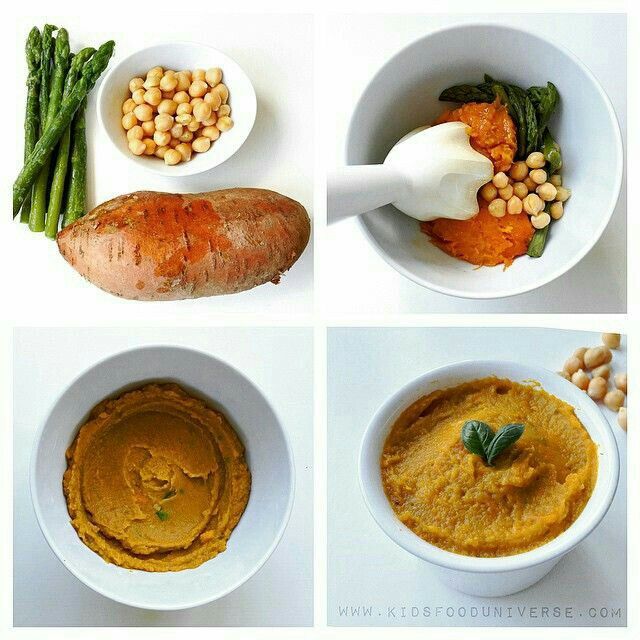 Place the baking sheet on the middle rack of the oven and bake until sweet potato is soft, about 30 minutes. Using tongs, turn each half over and let cool.
Place the baking sheet on the middle rack of the oven and bake until sweet potato is soft, about 30 minutes. Using tongs, turn each half over and let cool.
Image: Karen Biton-Cohen
Once cooled, scoop out the flesh using a spoon. Smash the scooped-out sweet potato flesh using a potato masher or the back of a fork.
Image: Karen Biton-Cohen
A blender or a food processor can also be used to puree the sweet potato, and you can add water, breast milk or formula as needed to thin it out. Continue adding liquid and mashing until the desired consistency is reached.
How to Boil Sweet Potatoes for Baby Food:
Image: Karen Biton-Cohen
Peel sweet potato and cut into half-inch cubes. In a pot, bring water to a boil and add sweet potato chunks. Reduce to a simmer and cook until tender, about 15 minutes.
Image: Karen Biton-Cohen
Transfer tender sweet potato chunks to a food processor and blend until smooth. You can also mash the sweet potato using a potato masher or a fork.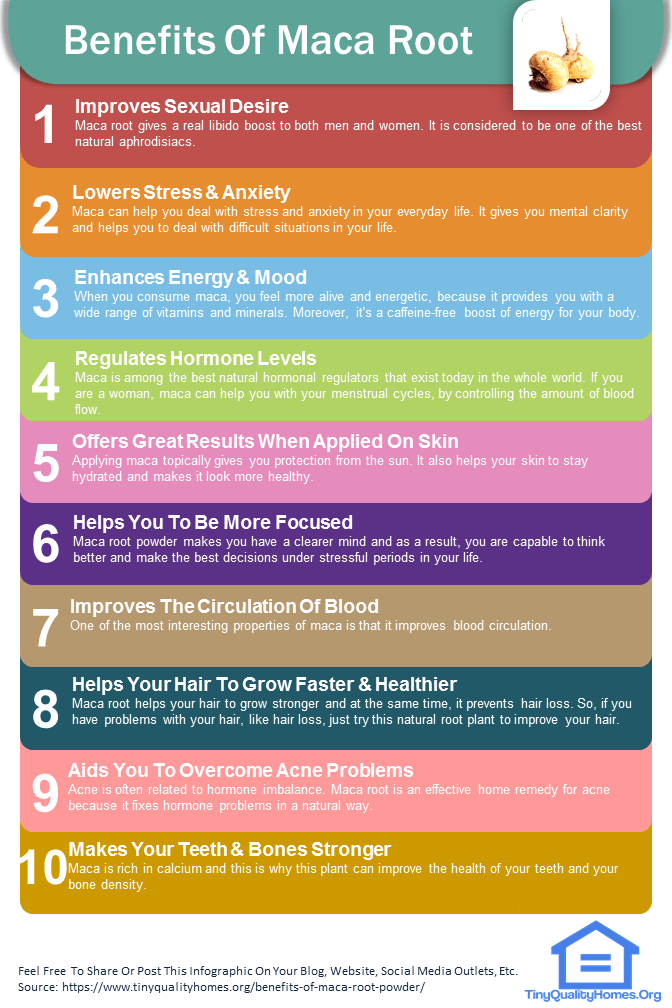 Reserve some of the cooking liquid or use breast milk or formula to thin out the sweet potatoes to the desired consistency for baby.
Reserve some of the cooking liquid or use breast milk or formula to thin out the sweet potatoes to the desired consistency for baby.
How to Steam Sweet Potatoes in the Baby Food Maker:
Image: Karen Biton-Cohen
Peel sweet potato and cut into half-inch cubes. Add the sweet potato chunks to the bowl of your baby food maker. Follow the instructions for your device and add as much water, formula or breast milk as needed to the steaming container. Puree until smooth.
Image: Karen Biton-Cohen
Once the sweet potato baby food puree has cooled completely, transfer it to a serving bowl or freezer-safe container. Prepared sweet potato baby food keeps for one month in the freezer.
Sweet Potato Baby Food Recipes
Looking to amp up the flavor of your sweet potato baby food? Try one of these sweet potato baby food recipes, created exclusively for The Bump by Karen Biton-Cohen. She crafted a sweet potato and pear baby food puree, as well as a chicken, apple and sweet potato baby food puree. For both sweet potato baby food recipes, see below.
For both sweet potato baby food recipes, see below.
Sweet Potato Baby Food Recipe With Pear Puree
(a Stage 1 recipe, appropriate at 4 to 6 months of age)
Image: Karen Biton-Cohen
1/2 cup sweet potato puree + 1/4 cup pear puree OR 1 large sweet potato + 1 pear
- Steam all the ingredients.
- Blend the ingredients together until smooth for a tasty baby treat.
Sweet Potato Baby Food Recipe With Apple + Chicken Puree
(a Stage 2 recipe, appropriate at 6 to 8 months of age)
Image: Karen Biton-Cohen
1 cup cooked, diced chicken (light or dark meat) + 1/2 cup sweet potato puree + 1/2 cup apple puree + cooking liquid
- Add 3 drumsticks or 1 breast to a pot of boiling water.
- Reduce to a simmer and boil until cooked thoroughly (usually about 30 minutes).
- Remove the chicken from the pot and let it cool before dicing it. (Note: If you used drumsticks, remove the skin at this point.
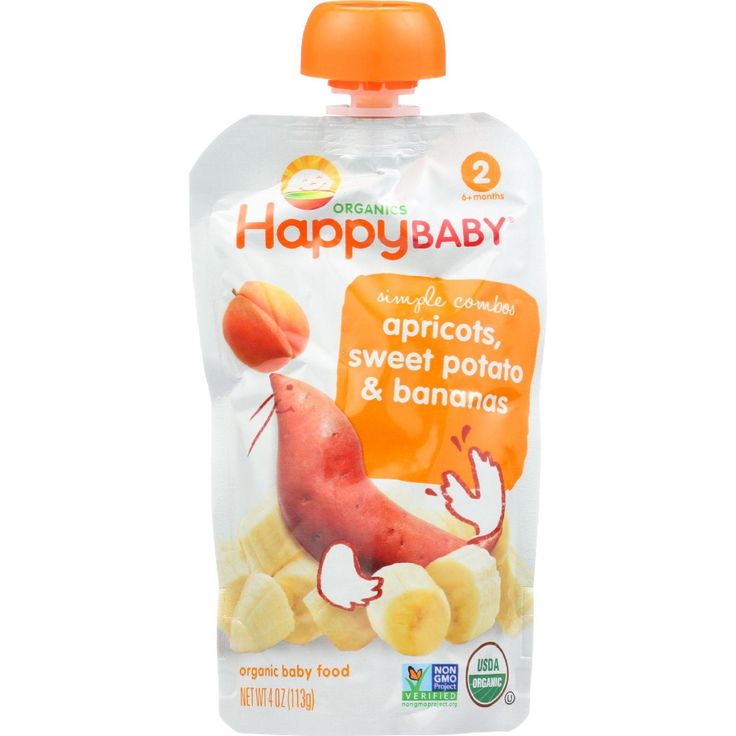 )
) - Blend the diced chicken, sweet potato and apple purees and 1/4 cup cooking liquid until smooth. Add more cooking liquid (or water) as needed to achieve a smooth consistency.
Sweet Potato for Baby: Health Benefits & Recipes
At FirstCry Parenting, our aim is to give you the most elevant, accurate and up to date information.
Every article that we publish, confirms to stringent guidelines & involves several levels of reviews, both from our Editorial team & Experts. We welcome your suggestions in making this platform more useful for all our users. Write in to us at [email protected]
- Is Sweet Potato Good for Babies?
- When Can You Start Feeding Sweet Potato to Your Baby?
- Nutritional Value of Sweet Potato
- Sweet Potato – Benefits for Babies
- Can Sweet Potatoes Cause Allergies in Babies?
- How to Select and Store Sweet Potatoes?
- How to Cook Sweet Potatoes for Babies?
- Quick Sweet Potato Recipes for Babies
Last Updated on
The food that a child eats has a huge impact on his dietary habits.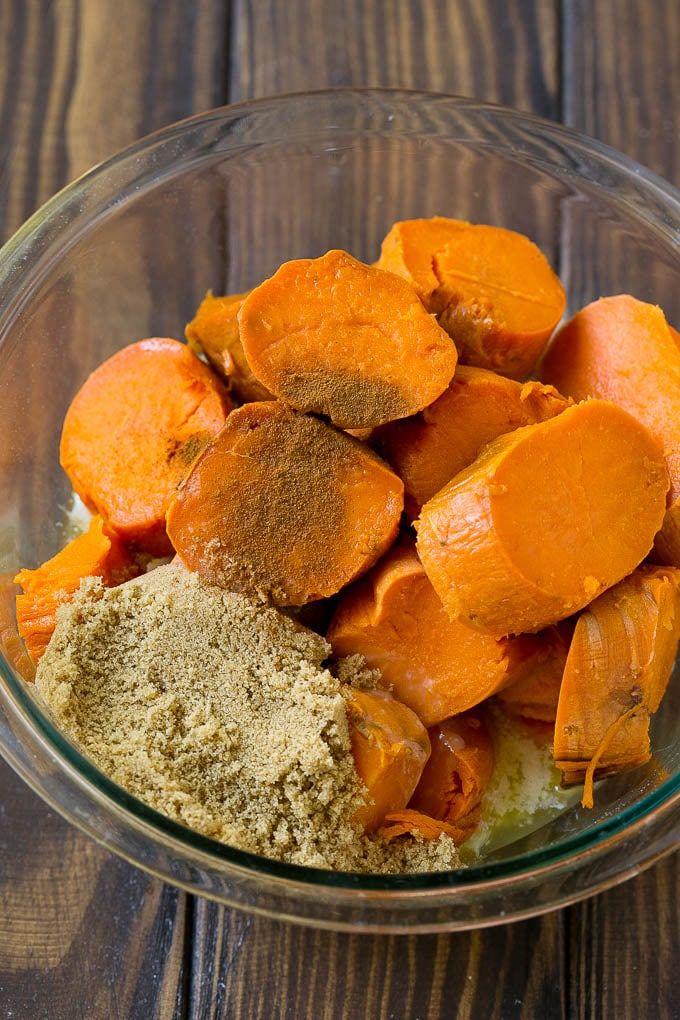 It is, therefore, the parents’ responsibility to ensure that their children are getting the nutrients required for their growth. However, sometimes, it can be difficult to feed babies certain foods as they are generally fussy eaters. To deal with this issue, picking the right ingredients and cooking them in a way that makes the food delicious becomes very important. If you find yourself stuck in a similar situation, you can opt to feed your baby sweet potatoes. They are an excellent choice of food, especially for babies who are just introduced to solid foods.
It is, therefore, the parents’ responsibility to ensure that their children are getting the nutrients required for their growth. However, sometimes, it can be difficult to feed babies certain foods as they are generally fussy eaters. To deal with this issue, picking the right ingredients and cooking them in a way that makes the food delicious becomes very important. If you find yourself stuck in a similar situation, you can opt to feed your baby sweet potatoes. They are an excellent choice of food, especially for babies who are just introduced to solid foods.
Is Sweet Potato Good for Babies?
Sweet potatoes are highly nutritious, not to mention delicious. They make for the perfect first food for your baby. They can be mashed or pureed upon cooking properly, and the lovely creamy texture makes it easy for babies to swallow and digest. The mildly sweet taste that it has also makes it a favourite food among babies.
When Can You Start Feeding Sweet Potato to Your Baby?
You can start feeding sweet potato to your baby when he turns six months old.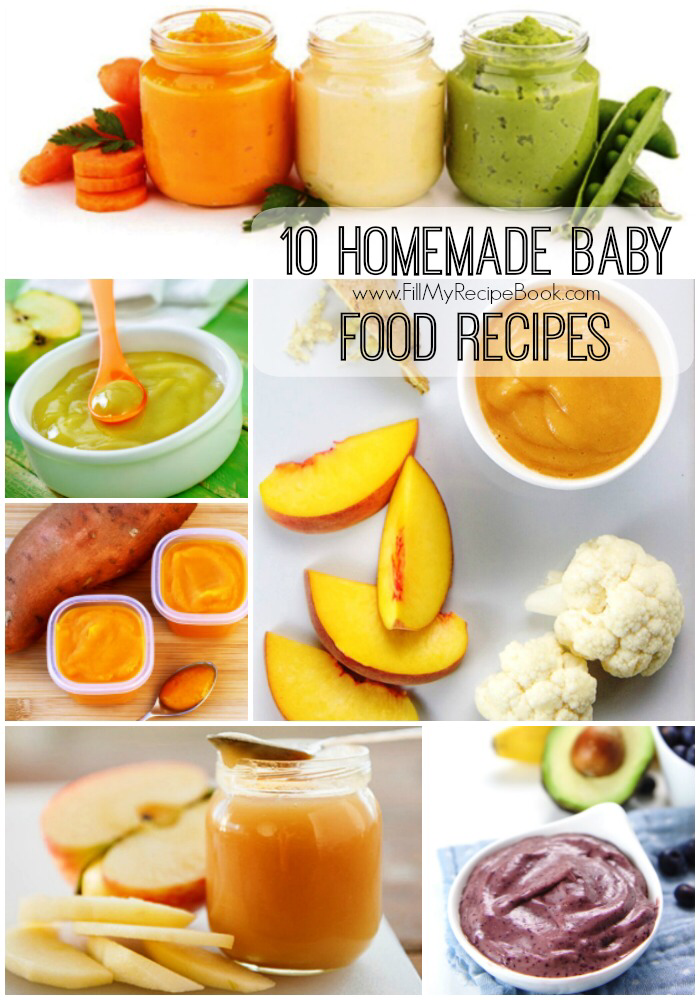 You can include sweet potatoes as one of the first solid foods when weaning him out. Initially, it can be fed in the form of a puree as it is easier for the baby to digest. After two months or so, when the baby turns eight months old, he/she will be able to eat sweet potatoes in the mashed or lumpy form. Sweet potatoes can also be combined with other foods like rice or oats, to increase their nutritional value.
You can include sweet potatoes as one of the first solid foods when weaning him out. Initially, it can be fed in the form of a puree as it is easier for the baby to digest. After two months or so, when the baby turns eight months old, he/she will be able to eat sweet potatoes in the mashed or lumpy form. Sweet potatoes can also be combined with other foods like rice or oats, to increase their nutritional value.
Nutritional Value of Sweet Potato
| Nutrient | Amount per 100 grams |
| Proteins | 1.6 grams |
| Omega 6 | .01 grams |
| Fibre | 3 grams |
| Carbohydrates | 20.1 grams |
| Calories | 86 |
Source: https://www.healthline.com/nutrition/foods/sweet-potatoes#section1
Sweet Potato – Benefits for Babies
Sweet potatoes have a considerable amount of nutrients that make it a healthy food for babies.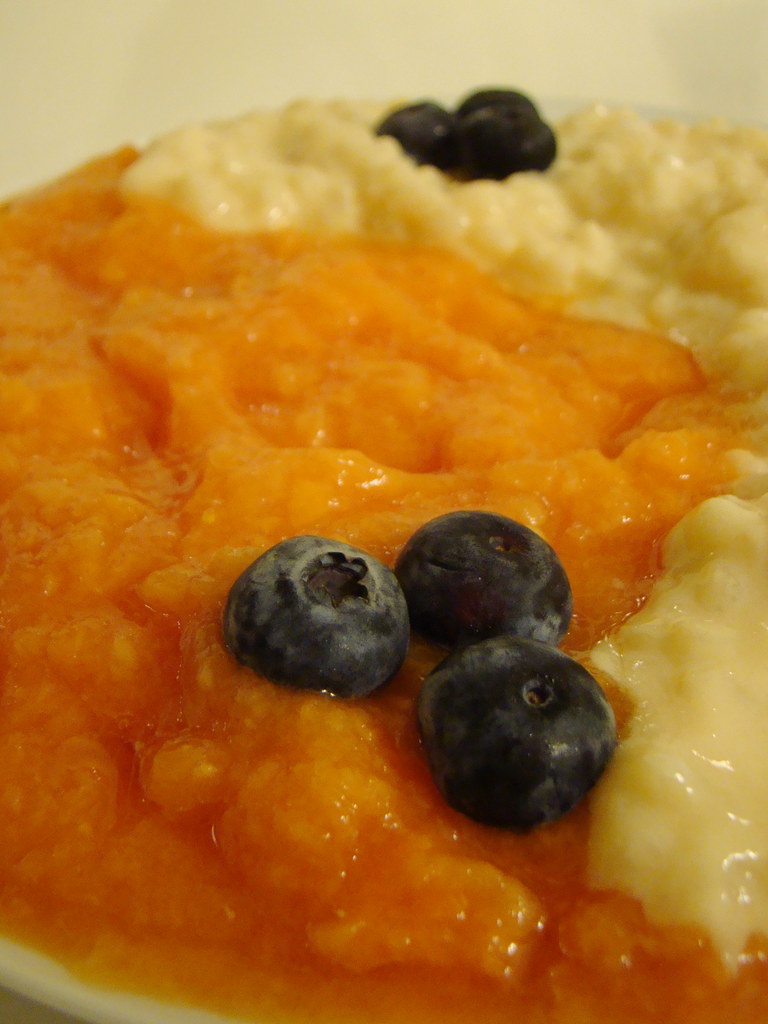 They are high in water content (about 77%) and low in fats. Thus, sweet potatoes are perfect for your baby.
They are high in water content (about 77%) and low in fats. Thus, sweet potatoes are perfect for your baby.
Here are some health benefits your baby will get after this food becomes a part of his/her regular diet:
1. Prevents and Resolves Constipation
Sweet potatoes are a good source of fibre. 100 grams of this spud provides about 3 grams of fibre, which can help prevent constipation and maintain a healthy digestive tract.
2. Beta-Carotene and Vitamin A
Sweet potatoes are packed with beta carotene, which is converted into vitamin A once it enters our system. Vitamin A improves eyesight; thus, this food must be included in every baby’s diet plan to improve or maintain the health of their eyes.
3. Immunity Booster
Sweet potatoes have a good quantity of Vitamin C and Vitamin E, which aid in strengthening immunity. These vitamins will help your baby fight common cold and infections that infants are prone to catching. It is also a great food for healthy and glowing skin.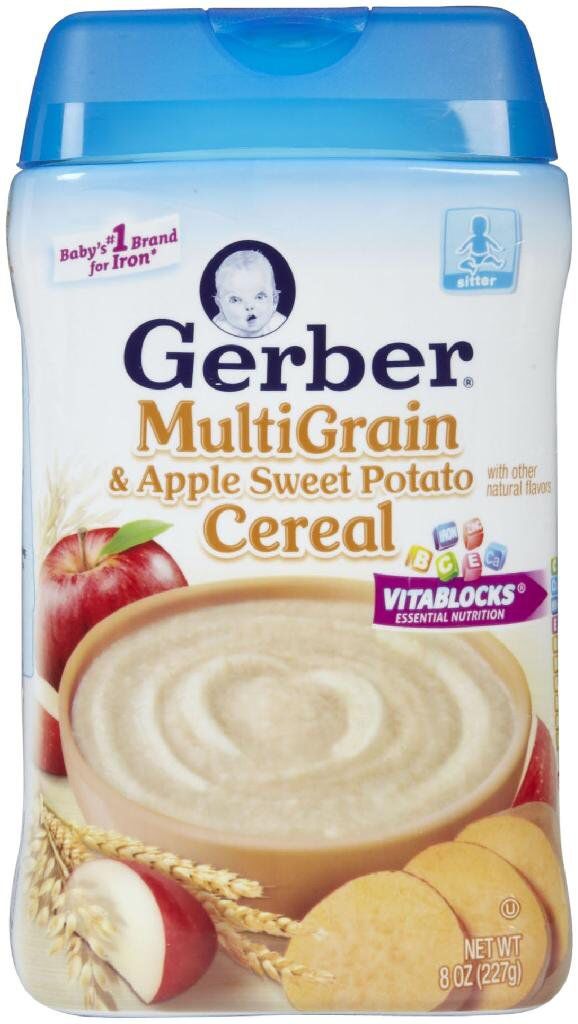
4. Good Calories
With just 0.1 grams of fat content and 86 calories per 100 gram, sweet potatoes provide nothing but good calories. This makes it a healthy food option for babies, especially if they are underweight. The high-calorie levels in sweet potatoes aid in weight gain and physical development in children.
5. Prevents Anaemia and Strengthens Bones
Sweet potatoes are loaded with calcium and iron, both of which are vital for growth in babies. Iron helps prevent anaemia, while calcium strengthens the bones.
Another question first-time parents might have is whether babies can have allergies to sweet potato. Let’s address it in the next section.
Can Sweet Potatoes Cause Allergies in Babies?
Generally, sweet potatoes do not cause any allergic reaction in babies. There may, however, be some side effects that are usually mild and controllable. This is why sweet potatoes are highly recommended to wean your baby onto solid foods. Having said that, some babies may truly be allergic to sweet potatoes, so look out for signs of vomiting, rashes, and diarrhoea. The most common allergic reaction is bloating and stomach gas due to indigestion. Babies, sometimes, spit the feed out also. In some rare cases, babies may also develop a rash around the anus. Sometimes, ingesting dirt left on sweet potatoes can also lead to side effects, such as vomiting and diarrhoea.
The most common allergic reaction is bloating and stomach gas due to indigestion. Babies, sometimes, spit the feed out also. In some rare cases, babies may also develop a rash around the anus. Sometimes, ingesting dirt left on sweet potatoes can also lead to side effects, such as vomiting and diarrhoea.
To ensure your baby gets the best out of sweet potatoes, you must select and store them appropriately.
How to Select and Store Sweet Potatoes?
Sweet potatoes last a while before cooking them, but only if you choose the appropriate ones. Here are a few useful tips for selecting and storing sweet potatoes.
1. Selecting Sweet Potatoes
It is always best to buy vegetables that have been grown organically. You don’t have to worry about pesticides then. The sweet potatoes should be medium-sized and have firm and smooth skin. If you cannot find medium-sized sweet potatoes, go for the small ones because the large ones usually have a high starch content. Avoid picking the ones that have soft or brown spots, holes or liquid oozing out of them as they may be contaminated or rotten.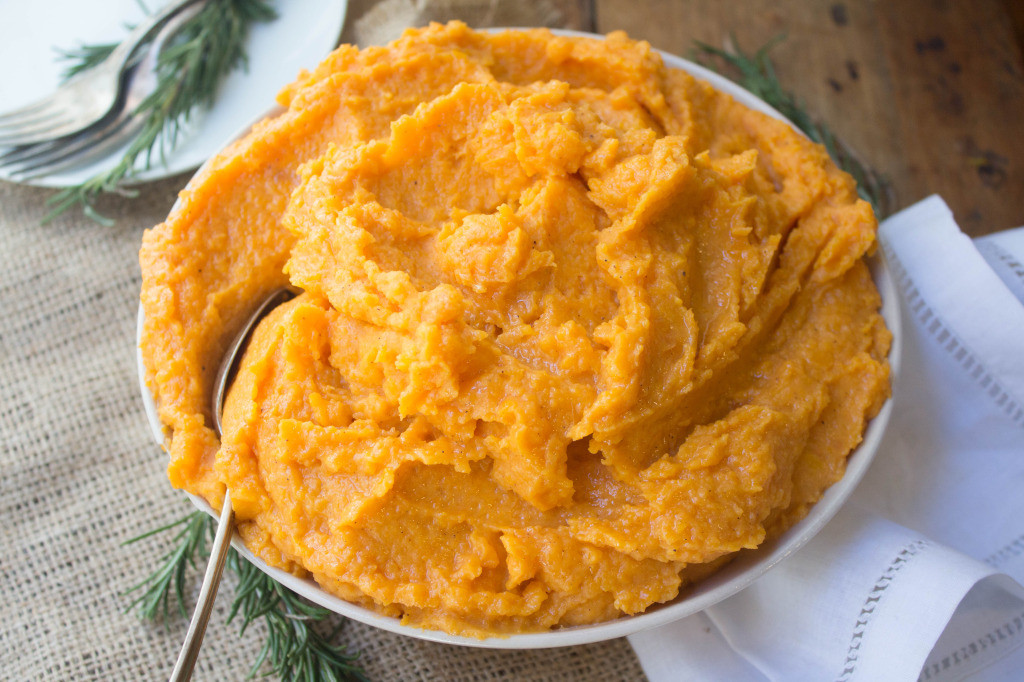 Remember, the deeper the colour of the potato, the richer it is in antioxidants.
Remember, the deeper the colour of the potato, the richer it is in antioxidants.
2. Storing Sweet Potatoes
It is not necessary to store sweet potatoes in the refrigerator; they can be stored at room temperature in a pantry or a dry area in the kitchen. If you store sweet potatoes at room temperature, ensure you use them within a week. If you store them in a cool, dark place, like a cellar or a dark and cool pantry, they can last up to two weeks. If the sweet potatoes have been lying in the pantry for over two weeks, check if they are firm enough and that they show no signs of being rotten. It is better not to use them if they start getting mushy, have an uneven tone, develop brown spots and smell weird.
Now that you know what care you need to take while selecting and storing the sweet potatoes, let’s take a look at how you can cook them for your baby. We have also provided some delicious recipes you can make for your little one.
How to Cook Sweet Potatoes for Babies?
One of the most important things to do when cooking for your baby is to wash the fruits and vegetables thoroughly before peeling or cutting them. The process is not much different for sweet potatoes too. Make sure you wash them thoroughly to remove every bit of dirt on it and peel the skin to expose its soft-texture flesh. You can use one of the cooking techniques given below to prepare a sweet potato dish for your baby.
The process is not much different for sweet potatoes too. Make sure you wash them thoroughly to remove every bit of dirt on it and peel the skin to expose its soft-texture flesh. You can use one of the cooking techniques given below to prepare a sweet potato dish for your baby.
- Baking: Heat the oven to 220 degrees Celsius. Prick the sweet potatoes and place them on a baking tray. Bake for 45 minutes, cool, and peel the skin.
- Boiling: You can peel sweet potatoes, cut them, and then boil till they are soft.
- Pressure Cook: Sweet potatoes can be peeled, chopped and pressure cooked till soft (1 to 2 whistles).
- Steamed: Peel and cut the potatoes and steam them using a steamer until they are soft.
- Microwave: After peeling, cut the potatoes into small pieces and poke holes all over. Then, put them in the microwave set at a ‘high’ setting for about 10 minutes.
Quick Sweet Potato Recipes for Babies
Now that we have seen the different techniques used for cooking sweet potatoes, we can look at a few simple recipes to make your baby’s food taste even better:
1.
 Sweet Potato and Carrot Puree
Sweet Potato and Carrot PureeWhen mixed with carrots, this dish can help improve eyesight because of the boost of Vitamin A. This recipe is apt for babies who have begun eating foods in combination (7 months and above).
What You Will Need:
- 1 medium-sized sweet potato
- 1 cup of water/ vegetable stock
- 1 medium-sized carrot
How to Cook:
- Grate the carrots and cut the sweet potatoes into small pieces.
- Cook them together in water till they turn soft. Let it cool.
- Blend the mixture into a soft creamy puree.
2. Sweet Potato Mash
Sweet potato mash is great for babies who are introduced to solid foods. This mash is smooth and creamy, which makes it extremely easy for babies to eat. You may leave some lumps if the baby is old enough to gum them up before swallowing.
What You Will Need:
- 1 medium-sized sweet potato
- 1 cup of water/ vegetable stock
How to Cook:
- Cook the potatoes either by baking or steaming them.
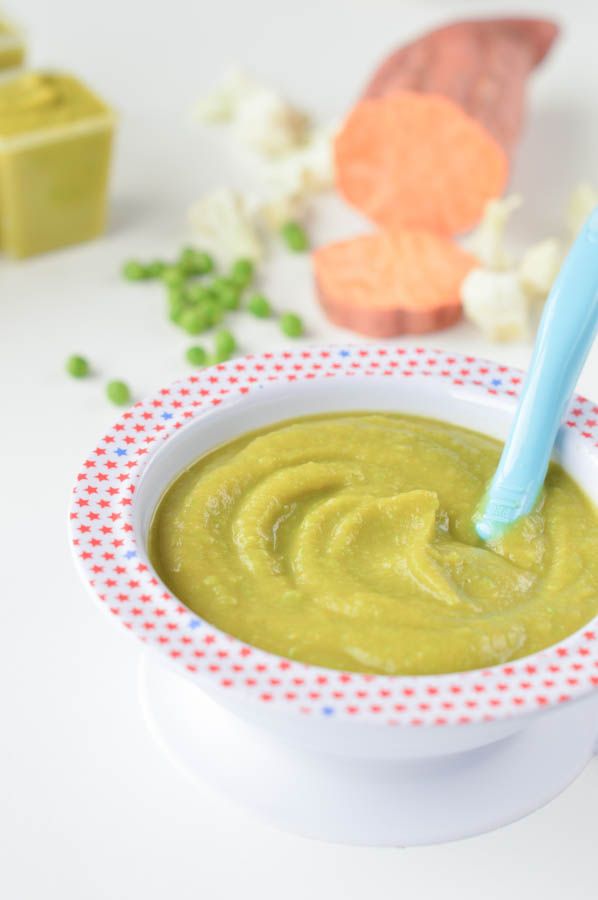
- Mash the potatoes while they are still warm.
- Add half a cup of water or vegetable stock and whisk or mix well.
- Add the remaining water or vegetable stock to make a smooth mash that you baby can swallow.
3. Sweet Potato and Chicken Soup
This dish has a nutritious broth loaded with protein and helps in the development of your baby’s body. Sweet Potato and Chicken Soup is perfect for the babies who have been introduced to non-vegetarian baby foods.
What You Will Need:
- 100 grams of minced chicken
- 5 cups of water
- 1 cup of cooked sweet potato
How to Cook:
- Cook the chicken in a pot with some water.
- Put the cooked sweet potatoes into a blender and add the cooked chicken along with the broth.
- Blend until you get a smooth mixture.
- You may add some boiled water to adjust the consistency or dilute the soup.
4. Sweet Potato and Milk Rice
This recipe is rich in dietary fibre, which helps prevent constipation.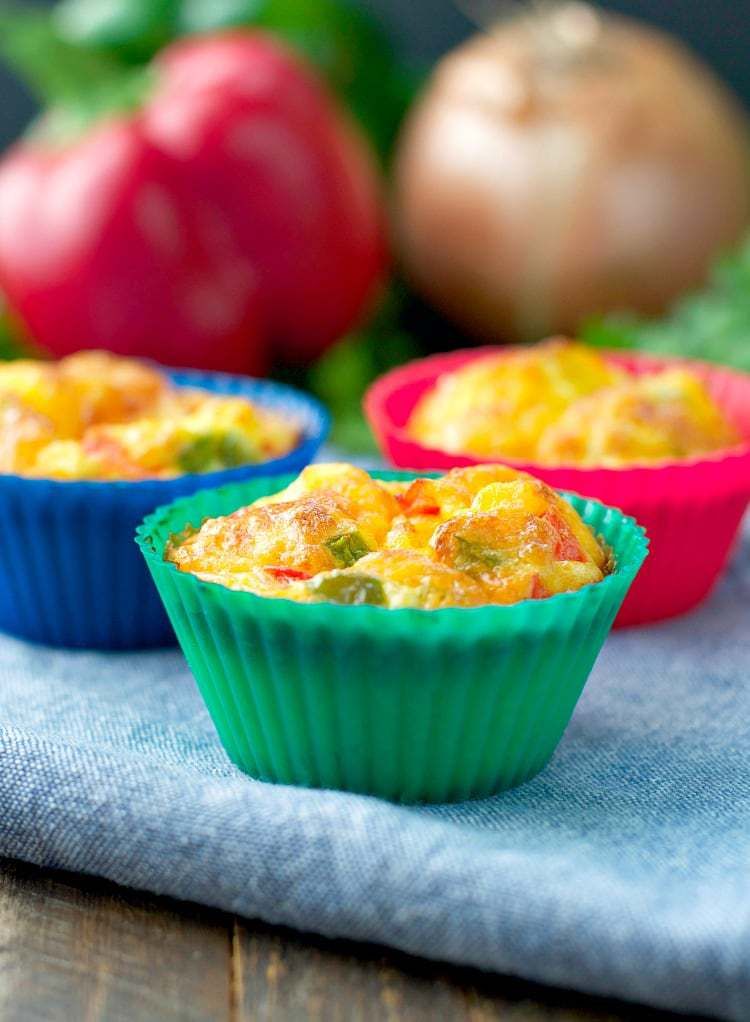 It also makes for a healthy dessert option for toddlers without using any sugar.
It also makes for a healthy dessert option for toddlers without using any sugar.
What You Will Need:
- 1 cup of rice
- 4 medium-sized sweet potatoes (peeled and diced)
- 3 cups of water
- 1 cup of milk/breastmilk
How to Cook:
- Boil the diced sweet potatoes and rice in a saucepan along some water.
- When they are half cooked, add the milk and give it a stir.
- Let it simmer for about 10-15 minutes.
- Once it is cooked well, let it cool before feeding your baby.
5. Sweet Potato and Plantain Soup
Plantain is another healthy food that helps in building the immune system. This soup recipe with plantain and sweet potatoes will help bring about healthy development in your little one.
What You Will Need:
- 1 medium-sized sweet potato, peeled and sliced
- 1 green plantain, peeled and sliced
- 1 tsp olive oil
- 1 small onion, finely chopped
- 1 clove of garlic, crushed
- 1 cup of chicken/vegetable stock
- 1 bay leaf
- 1/2 cup of milk/breastmilk
How to Cook:
- Sauté the onions and garlic until they are golden and tender.

- Add the plantain and sauté until they turn brown.
- Add the chicken stock and bay leaves.
- Add the sweet potatoes and reduce the heat. Let it simmer for at least 20-25 minutes or until they are cooked.
- Let the mixture cool down.
- Remove the bay leaf from the mixture.
- Blend the sweet potatoes with the plantain and the chicken stock till you get a smooth mixture.
- Transfer it to the saucepan again and heat it on the gas stove.
- Add the milk and mix well.
- Simmer for ten minutes.
- Serve when it cools down.
6. Sweet Potatoes with Peas and Cauliflower
This is another great recipe for babies over 7 months old. It has all the goodness of the three vegetables, sweet potatoes, peas and cauliflower.
What You Will Need:
- 1 medium-sized sweet potato, peeled and diced
- 1/2 cup florets of cauliflower
- 1/4th cup of green peas
- 3 to 5 cups of water
How to Cook:
- Boil the vegetables in water.
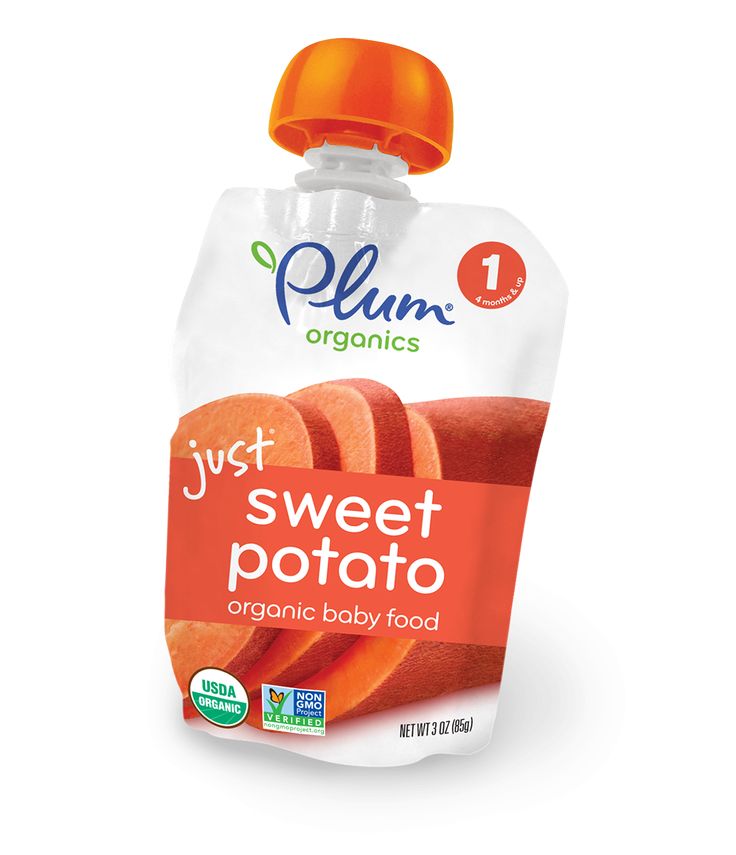 Add more water if required to cook them.
Add more water if required to cook them. - Let the mixture cool a bit.
- Blend it to form a smooth paste.
The sweet potato dishes mentioned above can be frozen too. If you are a working mother, you can prepare these dishes in advance and heat them just before feeding your child. However, always try to feed your baby freshly made dishes as you will then be providing your little angel with maximum nutrients.
Sweet potatoes are an amazing first food to give your child. It is a natural multivitamin and antioxidant that provides many health benefits to your baby. There are many baby food recipes that you can make with sweet potatoes, like a sweet potato and apple puree, sweet potatoes and butternut squash, etc. So, don’t shy away from cooking it for your little one. It is tasty and healthy too!
Resources and References:
- Healthline
- Livestrong
Also Read: Benefits of Beetroot for Babies
cooking recipes and age limits
› ›
Sweet potatoes or sweet potatoes are great choices for baby food. It is pleasant in taste (reminiscent of a mixture of potatoes and pumpkin or carrots with added sugar) and creamy texture (in the form of a puree), is liked by many babies and rarely causes allergies. But since this product is still a curiosity in Russia, our mothers will need explanations. So at what age can you give sweet potato to children and how to cook it properly for complementary foods?
Content
- From what age to give
- The composition of the product
- Is the battery useful for children
- Can sweet potatoes cause allergies
- How to choose for children's nutrition
- Subtleties of storage
- how to prepare for primacy
- Sweet Potato Baby Recipes
- Smooth Sweet Potato Puree
- Carrot and Sweet Potato Puree
- Sweet Potato Chicken Soup
- Sweet Potato Milk Rice Porridge
- Sweet potato with peas and cauliflower
- Video: how to make sweet potato for baby food
At what age to give
American parents start giving sweet potatoes to their baby, starting at six months. This is one of the first complementary foods introduced to a baby in the US after weaning.
This is one of the first complementary foods introduced to a baby in the US after weaning.
The first sample (1 teaspoon is enough) is offered in the form of a thin, homogeneous puree. It is easily absorbed by the body of the baby. The delicate creamy texture makes it easy for the baby to swallow and digest such food.
After that, they wait three days without introducing other new foods into complementary foods. That allows you to track the negative reaction and stop feeding sweet potatoes in time.
After about 2 months, the baby can try boiled sweet potatoes, mashed with a fork or grated on a fine grater. Almost all children like its moderately sweet taste.
After a year sweet potatoes are good to combine with rice or oats to increase the nutritional value of dishes.
Can a child eat sweet potatoes raw?
Sweet potatoes contain complex carbohydrates, so the glycemic index (GI) of the product is lower (55) than that of the usual potato (from 70).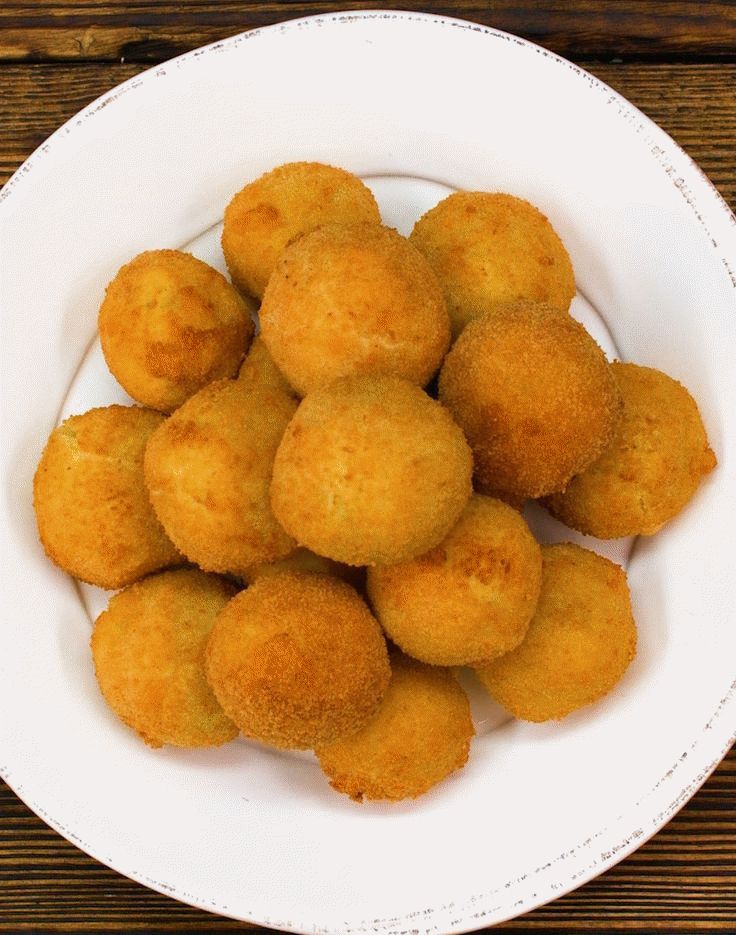
Is sweet potato good for kids
Baby likes sweet potato puree with turmeric
Sweet potatoes can bring many health benefits to a child if they are part of a child's diet. Key properties:
- Fights constipation. Sweet potatoes are a valuable source of fiber. 100 g of the product contains about 3 g of dietary fiber, which prevent constipation and strengthen the baby's digestive tract.
- Source of beta-carotene (provitamin A). This vitamin is essential for healthy vision. Its presence in the children's menu is a must and helps to improve eye health.
- Strengthens the immune system. Vitamins C and E in the composition increase the body's defenses, help the child fight infections.
- Good for the skin. Makes her look healthy and radiant.
- Healthy calories. Sweet potatoes contain only 0.1 g of fat at 86 kcal per 100 g. Therefore, they are among the healthy foods for babies, especially those with insufficient weight (hypotrophy).
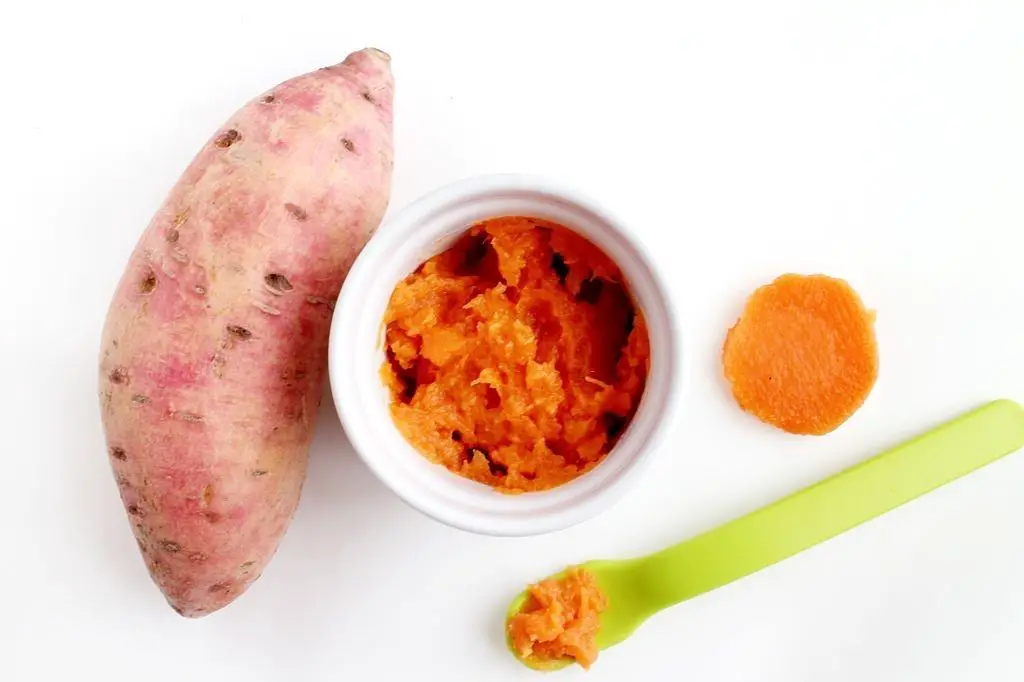 High-calorie sweet potato promotes weight gain and physical development of children.
High-calorie sweet potato promotes weight gain and physical development of children. - Prevents the development of anemia. Iron in the composition prevents anemia in a child with insufficient intake of a trace element with food or after severe blood loss (abdominal operations, injuries, etc.).
- Strengthens bones. Calcium, which is also found in sweet potatoes, is vital for the growth and development of children's musculoskeletal system.
Can sweet potatoes cause allergies
Sweet potatoes rarely cause allergic reactions in babies. That is why it is suitable for complementary foods. However, it is possible.
Signs of sweet potato allergy:
- vomiting,
- rash (including around the anus),
- diarrhea,
- bloating due to indigestion.
Vomiting and diarrhea can sometimes cause not only allergies, but also intestinal infections in the finished dish. For example, with insufficient sanitation of tubers or children's dishes.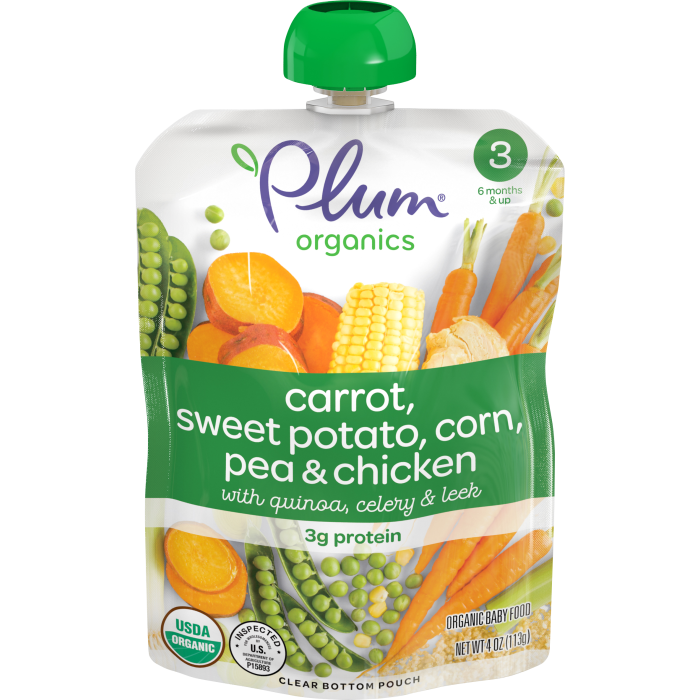
Babies may spit out sweet potato puree when switching to solid foods for a variety of reasons.
There may be other side effects, which are usually minor and easily manageable.
Caution! With ulcerative colitis and some other serious diseases of the gastrointestinal tract, sweet potato dishes are prohibited. Be sure to discuss the possibility of introducing sweet potatoes into complementary foods with your pediatrician.
Excessive consumption can provoke the formation of kidney stones.
How to choose baby food
The choice of food for a child's table should be taken seriously. If possible, choose organic sweet potatoes grown without the use of pesticides and other chemicals.
Here are a few tips to help you make your choice:
- Choose medium-sized tubers with firm, smooth skins. If they are not on sale, take small ones (large ones have a lot of starch).
- Set aside specimens that are too soft with brown spots on the skin, punctures, signs of rot, and emit an unpleasant odor.

- The richer the color of the potato skin (white/cream, pink, red and purple), the more valuable antioxidants the product contains.
Storage details
In this case, the refrigerator is not the right place. Sweet Potato Storage Options:
- in a covered box in the kitchen at room temperature for up to 1 week;
- in a cool pantry or cellar at +13-16°C - up to 2 weeks.
Sweet potato purée can be frozen in ice cube trays
Boiled sweet potato purée can be frozen in advance (a drop of lemon juice is added to prevent browning). It can be kept in the freezer for up to a year, but it is better not to use it for feeding children - during the defrosting process, bacteria quickly begin to multiply in the starchy mass.
How to cook for weaning
The first thing to do is wash the tubers thoroughly before peeling and cutting. Then remove the skin or leave (for baking) and thermally process (until soft) in one of the following ways:
- Baking.
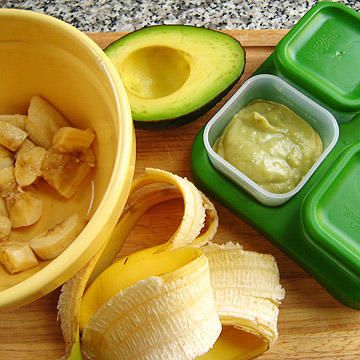 Preheat oven to 220°C. Pierce each tuber in several places and place on a baking sheet. Bake for 45 minutes. Cool and remove the skin.
Preheat oven to 220°C. Pierce each tuber in several places and place on a baking sheet. Bake for 45 minutes. Cool and remove the skin. - Cooking. Peel sweet potatoes, cut, boil in clean water.
- Pressurized (pressure cooker). Peel the sweet potato, cut into slices or cubes, place in a pressure cooker and wait for 1-2 whistles (guided by softness).
- For a couple. Peel and cut the product, place in a double boiler and cook.
- Microwave. Peeled potatoes cut into small slices and do in each hole. Place in the microwave and turn on the maximum power for about 10 minutes.
Puree cooked sweet potatoes with a blender, potato masher or regular fork. If necessary, add some boiled water.
Baby sweet potato recipes
Let's see what can be done with sweet potato for a child.
Smooth sweet potato puree
One-component sweet potato puree
Ingredients:
- 1 medium sweet potato,
- 1 glass of water or vegetable broth.

Cooking method:
- Prepare the sweet potato using any of the available methods.
- Mash while still warm.
- Add half a glass of water or vegetable stock and beat or stir well.
- Add the rest of the water/broth to make a thin, smooth puree that a child can easily swallow.
Carrot and Sweet Potato Puree
This puree is rich in vitamin A. It is suitable for babies from 7 months old who have already become familiar with mixed foods (containing two or more ingredients).
Two-component puree with carrots and sweet potatoes
Ingredients:
- 1 medium sweet potato,
- 1 medium carrot,
- 1 glass of water or vegetable stock.
Method of preparation:
- Thoroughly washed and peeled carrots, grate, and peeled sweet potatoes cut into small pieces.
- Boil them together in the same water until soft.
- Cool and puree.
Sweet potato chicken soup
This dish contains a nutritious broth rich in protein. But it is only suitable for children who are accustomed to non-vegetarian food.
But it is only suitable for children who are accustomed to non-vegetarian food.
Sweet Potato Chicken Soup
Ingredients:
- 100 g lean chicken mince,
- 5 cups water,
- 1 cup boiled sweet potato.
Cooking method:
- Boil the minced chicken in a saucepan with a little water. Don't forget to skim off excess fat while boiling.
- Transfer the boiled sweet potato to a blender and add the prepared chicken broth to it.
- Blend until smooth.
- If the soup is too thick, add boiled water.
Rice porridge with milk and sweet potatoes
This recipe is rich in dietary fiber, which helps prevent constipation. It is also a healthy dessert option for toddlers without the use of sugar.
Sweet potato rice porridge for children
Ingredients:
- 1 cup rice
- 4 medium sweet potatoes
- 3 cups water
- 1 cup breast, goat, coconut or cow milk.
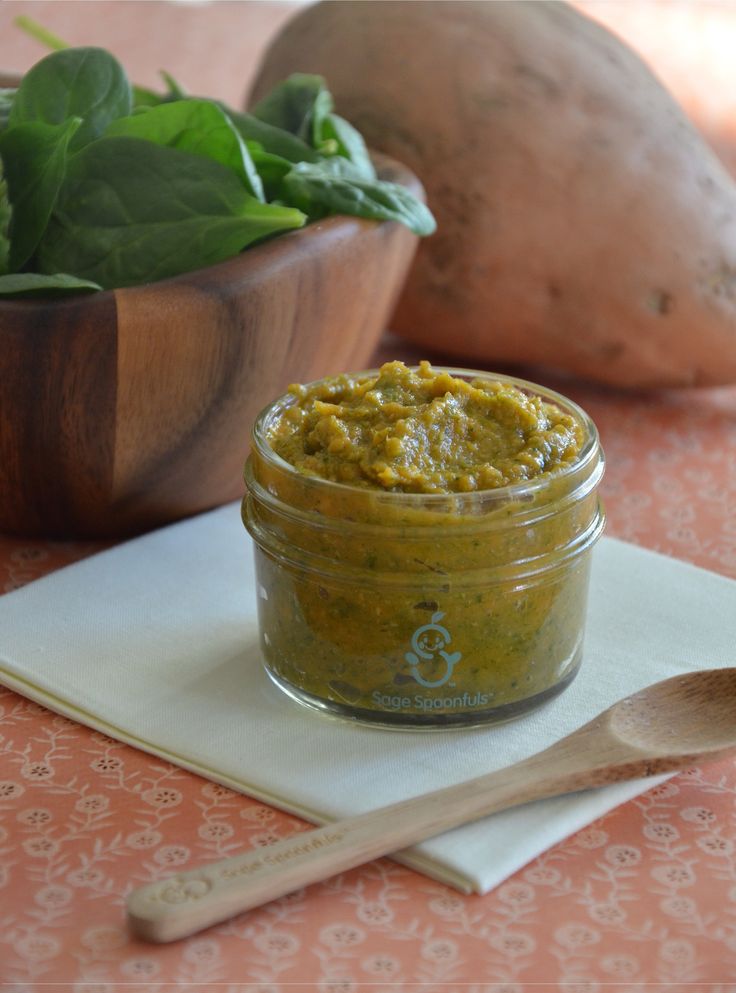
Cooking method:
- Boil diced sweet potatoes and rice in a little water.
- 10-15 minutes after boiling (when the food is half cooked), add milk and stir.
- Let stand 10-15 minutes.
- Cool slightly to serve to a child.
Sweet potato with peas and cauliflower
Another great recipe for babies from 7 months old. The dish has absorbed the virtues of three vegetables: sweet potatoes, peas and cauliflower.
Sweet potato puree with green peas and cauliflower
Ingredients:
- 1 medium sweet potato,
- 1/4 cup green peas,
- 1/2 cup cauliflower flowers, 9013 water
- (depending on desired consistency).
How to cook:
- Wash, peel and dice sweet potatoes.
- Boil all vegetables in water.
- Allow the mixture to cool slightly.
- Blend with a blender until smooth.
Video: how to make sweet potatoes for baby food
Sweet potatoes also combine with other foods suitable for baby food, such as apples, pumpkin, zucchini, legumes, corn, cabbage and broccoli.
Nutritionists recommend pairing high-carbohydrate sweet potatoes with high-fiber greens (spinach, dill, and parsley). More recommendations and recipes in our Instagram. We look forward to visiting!
Parsley for children: from what age can it be given.
Share with friends:
Author: Yakusheva Tatyana
Potatoes in complementary foods - Encyclopedia Baby food
Levchuk Victoria © In the modern culinary world, potatoes occupy a leading position in consumption, especially in Russia. Therefore, most parents try to quickly introduce potatoes into the child's diet. But not everything is so simple and easy. When should you introduce your baby to potatoes? How much to give? How to give? And how to enter? We will try to answer all these questions in the article Potatoes in complementary foods.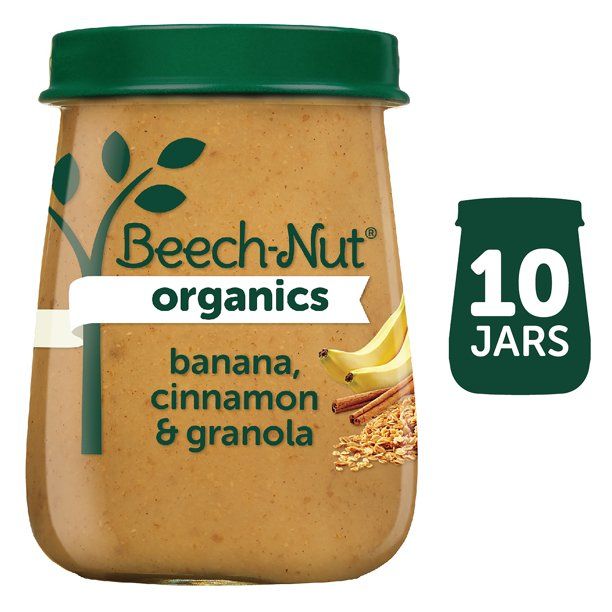
What are potatoes?
Contents:
Potatoes are also called tuberous nightshade. It is a perennial herbaceous plant that reproduces only by tubers. This product is one of the most important components of the diet to this day. But, due to the content of solanine in it, they are considered poisonous. Therefore, it is strictly not recommended to use potatoes in a “green” form, because. It is deadly for both animals and humans.
In agriculture, potatoes are grown as an annual. The most popular types of potatoes for consumption are: Chilean, tuberous and Andean. Product seasons are summer and autumn. The same is true in Russia.
The history of the potato
It is hard to imagine that a few millennia ago no one even thought about the existence of the potato. But for the first time it was mentioned about 9-7 thousand years ago on the land where Bolivia is now located. Its introduction into agriculture was started with the use of lush thickets. And the Indians not only used it, but also considered it to be an animated object and prayed to it.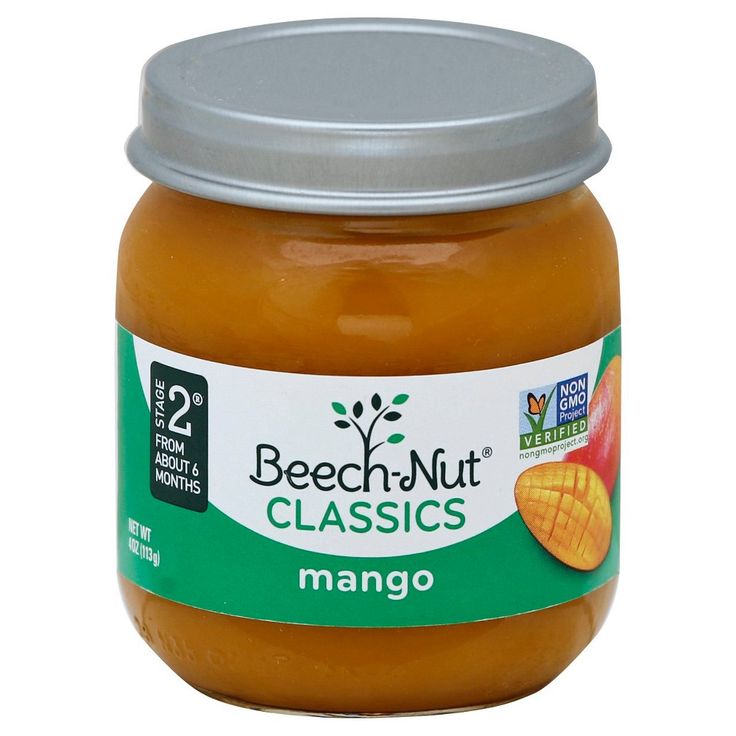
The European world adopted the potato in the 16th century and considered it poisonous as well as decorative. But thanks to Antoine-Auguste Parmentier, an agronomist from France, it was discovered that potatoes have an excellent taste and a lot of nutrients. This discovery helped fight famine in France.
Potato appeared in Russia a little later, in the 17th century. Peter the Great brought a bag with tubers of this product to the capital of the Russian Empire from Holland for popularization in the provinces for its cultivation. However, the potato did not immediately gain its fame. At first, the product was considered an exotic vegetable, and it was served only in rich families. And then, after some time, gradually displacing turnips from the diet of peasants, potatoes were accepted throughout Russia.
The benefits of potatoes in baby food
Potatoes are considered a good source of vitamin C, vitamin B6 (which supports the formation of new cells in a child's body) and potassium. It also contains fiber, iron, folate, riboflavin, thiamine, niacin, zinc and magnesium!
It also contains fiber, iron, folate, riboflavin, thiamine, niacin, zinc and magnesium!
Potatoes are an excellent source of vitamin C, the average tomato is significantly less of this vitamin. Vitamin C is a water-soluble vitamin that acts as an antioxidant that stabilizes free radicals, thereby helping to prevent cell damage. It helps in the production of collagen; promotes the absorption of iron; and helps heal wounds and keep gums healthy. Vitamin C also helps support the body's immune system.
One medium potato with skin contains 2 grams of fiber or 8% of the daily value per serving. Fiber is a complex carbohydrate and is part of plant material that cannot be digested and absorbed into the bloodstream. Soluble fiber helps with weight loss because it makes you feel fuller for longer, and studies have shown that it also helps lower blood cholesterol levels.
Potatoes are a good source of vitamin B6, providing 10% of the recommended daily value.
Vitamin B6 is a water-soluble vitamin that plays an important role in carbohydrate and protein metabolism. It helps the body make non-essential amino acids needed to make various body proteins; B6 is also required for the synthesis of hemoglobin, the main component of red blood cells.
It helps the body make non-essential amino acids needed to make various body proteins; B6 is also required for the synthesis of hemoglobin, the main component of red blood cells.
One medium potato provides 6% of the recommended daily intake of iron.
One medium potato with skin provides 620 milligrams or 18% of the recommended daily value (DV) of potassium per serving and is considered one of the best potassium foods. Potatoes rank highest among potassium-rich foods and are among the 20 most commonly consumed raw vegetables and fruits. Potassium is a mineral that is part of every cell in the body. It helps maintain normal blood pressure. Potassium is also vital for the transmission of nerve impulses or signals, as well as for helping muscles.
As with many other vegetables and fruits, the nutritional value of potatoes is maximized when cooked with the skin on.
Of course potato skins are difficult for young children to digest, although young potatoes are thin and tender and easy to peel off. But it is rare for small children to prepare dishes made from potatoes with skins, such as village potatoes. Such dishes are offered to older children who will appreciate the taste of the product with spices.
But it is rare for small children to prepare dishes made from potatoes with skins, such as village potatoes. Such dishes are offered to older children who will appreciate the taste of the product with spices.
Potatoes are packed with carbohydrates. Carbohydrates are generally considered a bad food, but the carbs in potatoes are complex carbs - the "goodies" of the carb world! They are the main source of fuel, helping to feed the brain and bring energy to the muscles of the child!
Carbohydrates in potatoes contain "resistant starch" that does not survive digestion on its way to the large intestine! There, it acts as a fiber as it can help lower cholesterol levels and help protect against colon cancer. Potatoes give a satisfying feeling of fullness, which is why they are a popular comfort food!
Unfortunately, the health benefits of potatoes are generally negated by unhealthy cooking methods such as roasting. Or by adding various fillings that improve the taste of potatoes, but reduce its benefits. And this is a shame, because potatoes, properly cooked, can be not only delicious, but also healthy for the little man.
And this is a shame, because potatoes, properly cooked, can be not only delicious, but also healthy for the little man.
Potatoes are introduced into complementary foods at the age of 7-8 months. Ideally, after 8 months, since not every child is able to digest potato starch well. It is because of him that they try to introduce potatoes into complementary foods not as the first product. In American pediatrics, a child's acquaintance with white potatoes occurs at about the age of 8-10 months, closer to 10 months. Not to be confused with sweet potatoes. It is in Russian cooking without potatoes anywhere, any soup or stew includes this product, but other countries sometimes prefer sweet potatoes. Potatoes in complementary foods are peeled in a thin layer, young potatoes are washed with a rough sponge, which can easily peel off the delicate skin without a knife.
Mashed potatoes for baby are prepared with a fork and a sieve/masher. The blender makes the puree sticky, not every child will eat this.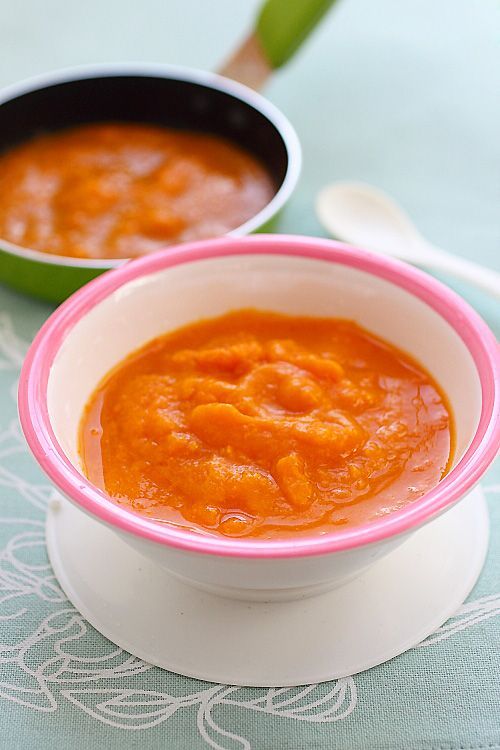 Therefore, we try to prepare mashed potatoes without lumps, if this does not work, we use a plastic sieve to give a more uniform consistency.
Therefore, we try to prepare mashed potatoes without lumps, if this does not work, we use a plastic sieve to give a more uniform consistency.
Always add butter to mashed potatoes. We make mashed potatoes liquid, so we do not pour out the potato broth, but use it. Without salt. We introduce the baby to potatoes for 4-7 days, follow the reaction of the body. Possible constipation.
We give mashed potatoes to the child 1-2 times a week, 100-150 grams at a time, but less is better than more. We look at the condition of the child. Although the potato occupies a leading position in Russian cuisine, I believe that potatoes should be an episodic product in baby food, which is given a little in combination with other vegetables. In large quantities, potatoes will not bring much benefit, but you should not refuse the product either.
By the way, you can store cooked potatoes for a child for about a day, up to a year, then as it is customary in the family.
Complementary potatoes
Young potatoes for children
Young or early potatoes are offered to children from April to July, depending on the climate.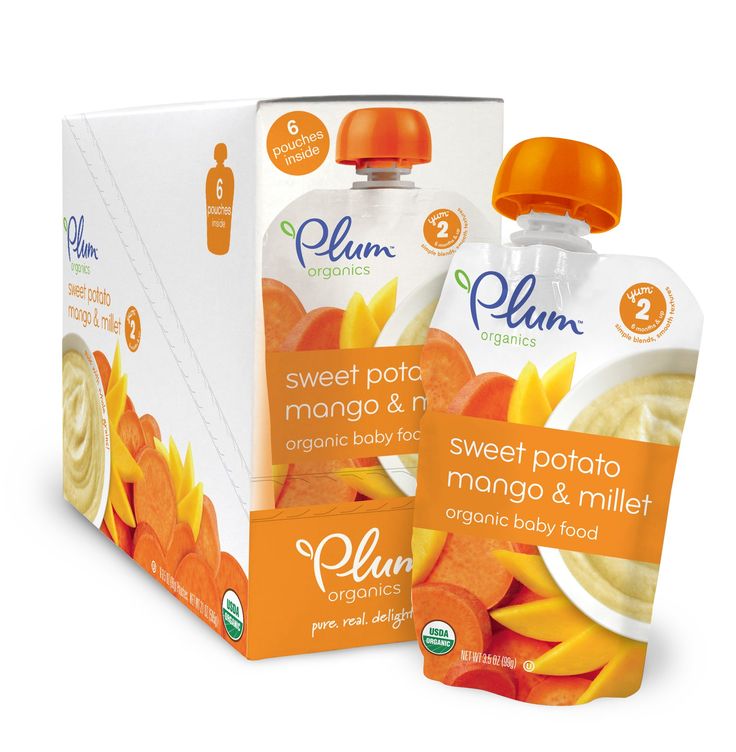 It can be offered to a child after 1.5-2 years in a boiled form, after 3 years in a baked form, after 4-5 years in a fried form. It is important that the child knows how to chew food well, to bite it into two halves. Young potatoes can be very small, and this is a risk of suffocation.
It can be offered to a child after 1.5-2 years in a boiled form, after 3 years in a baked form, after 4-5 years in a fried form. It is important that the child knows how to chew food well, to bite it into two halves. Young potatoes can be very small, and this is a risk of suffocation.
Ideal for boiling, stewing, steaming, and roasting. Ideal on its own or as part of salads or stews. You can read more in a separate article about Young potatoes here.
RECIPE - Young potatoes in their skins.
ARTICLE - New potatoes.
Young potatoes complementary foods Infographics
Until what age should potatoes be soaked?
The most important question that parents of almost all children ask is, until what age should potatoes be soaked?. We'll try to answer. Up to about a year, it is advisable to soak the potatoes in cold water. At first, the potatoes are soaked for about 10-12 hours in order to completely get rid of starch, a change of water is desirable, at least a couple of times.
Then the time is gradually reduced, by the year the potatoes are soaked for about 1-2 hours, no more. After a year, potatoes are prepared in the same way as is customary in the family. Why are we doing this? It's just that starch is poorly absorbed by the child's body, and it also increases insulin levels. And potatoes are a tuberous product that likes to collect nitrates, pesticides, etc., so it must be soaked for at least a couple of hours, for the safety of the whole family.
Allergy to potatoes
Allergy to potatoes in a child is very rare. But if it happened, then most often at the age of up to a year, during the introduction of complementary foods. People can be allergic to both raw and boiled potatoes. Potato allergy symptoms range from mild to severe. They can affect the skin, respiratory system and digestive tract. A potato allergy can also cause a life-threatening reaction called anaphylaxis.
Potatoes contain a large number of chemical compounds, most often proteins (pentone and tuberin) and starch can cause allergies.
Moreover, if there may be an allergic reaction to the first components, then there may be hypersensitivity to the last component, since the product is poorly digested by the body, which leads to unpleasant symptoms in the form of gas formation, constipation, etc.
Allergy to potatoes can manifest as redness, rash, difficulty breathing, swelling of mucous membranes, irritation in the mouth, impaired stool, loss of appetite, vomiting, stomach pain, etc. Worst option - angioedema and anaphylactic shock.
If an allergy to potatoes appears, we cancel the product and turn to a pediatrician who will prescribe enterosorbents and histamine preparations. If the child is choking, blushing, unable to take a breath, urgently call an ambulance.
How to give potatoes
Complementary potatoes can be given up to 9-10 months only in the form of a homogeneous consistency, namely in the form of mashed potatoes, preferably without lumps.
Then you can give boiled potatoes in small pieces, like finger food. But potatoes are chosen crumbly and well-cooked so that the child procrastinates a piece in his mouth, and swallowing it does not choke.
Potatoes can also be given in the form of boiled, baked, steamed potatoes. All other options up to 2-3 years are contraindicated for a little man. Up to a year, potatoes in complementary foods are given in the form of mashed potatoes and soups. After that, you can make potato pancakes or cutlets, dumplings, stews, borscht, sauces, casseroles, etc. from potatoes.
Roasting white potatoes is the best way to prepare them. Baking white potatoes, especially for baby food, brings out their natural flavor while retaining most of the nutrients.
How to choose and store potatoes
First of all, pay attention to the peel. It is believed that the thicker the peel, the more mature the potato is. And if it is mature, the more likely it is that the potato will survive the winter.
Never buy sprouted or green potatoes. in this state, toxic substances are activated in him. Small depressions, grooves, speak of the experienced presence of May beetle larvae, and barely noticeable holes can tell that a potato tuber has tried a wire beetle. Brown spots can indicate a scab disease. This disease is caused by fungal bacteria. A really high quality potato should be firm and firm, with a smooth skin and no external imperfections.
The most excellent types of potatoes for boiling and frying are those with pinkish skins. And for mashed potatoes, potatoes with white flesh and skins are most suitable.
Refrigeration is not recommended, but it is possible. Create special conditions for this. There are a few precautions in this process.
The starch found in potatoes can turn into sugar at low temperatures. For this reason, potatoes can have a sweetish taste. The higher the percentage of moisture in the refrigerator, the greater the risk that the potatoes will rot.
Do not store potatoes in plastic bags in the refrigerator. He needs to breathe.
If the potatoes are already cooked, it is best to eat them within 2 days. And if the potato is raw, then within a week everything will be fine with it. Remember that potatoes should be stored in the refrigerator for no more than 7 days.
The cellar is the best way to store potatoes. It should be dry, dark, and the temperature constant. The best average temperature is from 2 to 4 degrees, and the percentage of humidity should not exceed 70%. In order to reduce dampness in the cellar, its floor is covered with rubble or pebbles. If there is a window in the storage room, then you need to try to make sure that direct sunlight does not fall on the potatoes. Also try to ventilate the room, because. stagnant air can harm potatoes.
Shelf life of potatoes in the cellar: six months.
Pesticides and potatoes
If, when pressed with a fingernail, the peel easily breaks, and there is moisture at the site of the nail mark, then this means that the potato was grown with the help of nitrates.
If a crunch is heard, then the potato is quite safe, and you can take it.
Potatoes receive the first dose of pesticides, herbicides and insecticides from producers during cultivation. These substances help to get rid of weeds, pests, irritants of various diseases and fungi. Nitrates are also used for larger plant volume and faster growth. And to improve the appearance, it is simply washed.
Contraindications
It is recommended to restrict the diet of potatoes to those who suffer from problems with digestion or obesity, the work of the gastrointestinal tract. Without a doctor's referral, you should not be treated with potatoes, with diabetes. We can't rule out an allergic reaction. Here you will need the help of a doctor. If necessary, an antihistamine should be taken to avoid complication of the patient's condition.
How to cook potatoes?
Potatoes are offered as a one-component puree for the first feeding, cooked from a fresh product. The product can be boiled in water or steamed, baked in the oven.
At first, the potatoes must be peeled, but as soon as the baby gets acquainted with the product, it can be boiled or baked in the oven in a peel, the taste of the product is different, so it’s worth introducing the baby to all possible cooking options. After 3 years, you can give the baby to eat potatoes that were baked in a fire, just clean it well from the ashes.
Freezing potatoes
I do not recommend freezing potatoes, especially for a child. Many write on the Internet that raw potatoes, after freezing and thawing, acquire a sweet taste. Honestly, no, it doesn’t, especially if it’s in mayonnaise with garlic, it’s normally baked and it turns out delicious. I freeze potatoes in a complete adult dish and do it to save my time, like french fries. But when I cook for a child, I soak the potatoes for several hours, why freeze it after that. This is not a product that should be stored in the freezer, then pulled out and cooked again. Peel one potato in just 1 minute, I do not feel sorry for the time for the child.
But the French-style meat is cooked for about an hour, and then baked.
Also, do not freeze mashed potatoes, they become too watery.
Finger food potatoes
Babies have a natural curiosity and need to be explored. Why not take advantage of this when serving baby food? Help your baby develop a strong grip by offering finger food and self-feeding food.
For example, white potatoes mixed with flattened peas are a good finger food option. This is done very easily. Pour the steamed peas, which were previously mashed, into the mashed potatoes. This consistency will help the child develop motor skills while the child is trying to fish out green peas from the white mass of potatoes. It's also worth trying mixing carrots, broccoli, green beans, and any other colorful food with mashed potatoes.
Potato pieces can be given when there is confidence that the child will not choke. It is worth choosing a crumbly potato variety that is well cooked. Give small pieces so that you can swallow them.
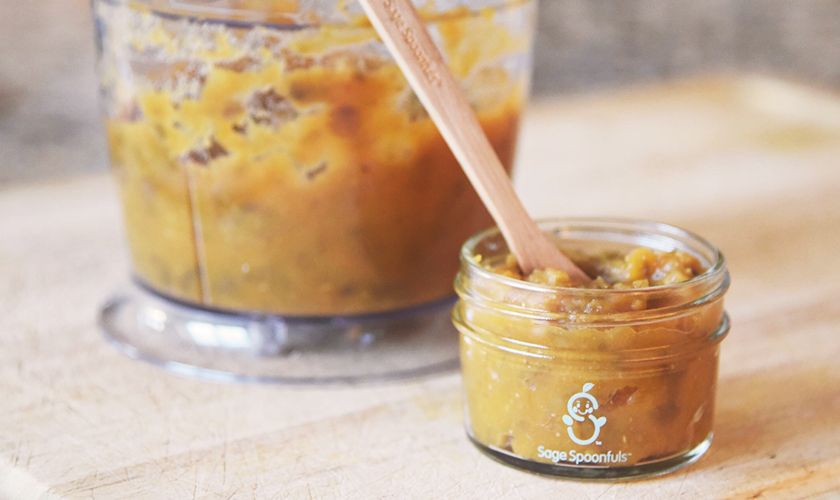
We eat deliciously. Annabelle Carmel.
Superfood for your child from 0 to 2 years old. Ruth Yaron Superfood for your child from 0 to 2 years old. Ruth Yaron Superfood for your child from 0 to 2 years old. Ruth YaronPotato ready-made baby food
Potato ready-made baby food offers potatoes in the form of mixes with other vegetables, meat or fish. Pure mashed potatoes can only be found at Hipp and Gerber.
Then the most common vegetable combination is zucchini and potatoes , this type of baby puree is offered to us by such manufacturers as Semper, Fleur Alpine, Hipp, Frutonyanya, Gerber. Moreover, companies such as Fleur Alpine, Hipp add rice flour and rapeseed oil to this baby puree, in addition to the declared vegetables. Also found are cauliflower and potatoes from Fleur Alpine and Gerber, corn and potatoes from Semper, and pumpkin and potatoes at Hipp. An interesting combination is offered by baby food manufacturer Bibikol:
- zucchini, potatoes and goat curd;
- pumpkin, potatoes and goat cheese .

But carefully read the composition of baby puree, as this manufacturer added rice flour and an apple to these purees.
There are also many vegetable platters with potatoes from various baby food manufacturers, for example:
- Hipp vegetable platter, 125 grams,
- Heinz Vegetable Mix, 120 grams,
- Marmaluzi Sweet Vegetable Puree, 125 grams.
Potatoes are often combined with meat and fish. Basically, we are offered something similar to stew or soup and borscht, as well as fish cakes with mashed potatoes or fish soups, but all this is offered in the form of a homogeneous consistency. Basically almost all jars from 120 grams and more. The smallest dosage of 80-100 grams is found in Frutonyanya and 100 grams in Babushkino Lukoshko.
Let's look at some examples of baby meat and potato purees .
I remind you that we carefully read the composition of such multi-ingredient children's dishes, because manufacturers add herbs (basil, dill, parsley), oil (rapeseed, olive, corn, etc.
), natural thickeners (rice or oat flour) to give taste ), spices (pepper and salt), products that have not yet been introduced into the baby's complementary foods (spinach, leek, etc.). Therefore, if the composition contains at least one unfamiliar product for the baby, then this baby puree must be introduced into the child's diet, as a new product, within 4-7 days.
Hipp
- Vegetable cream soup with chicken, 190 grams;
- New potatoes and green beans with rabbit;
- Vegetable mix with beef, 220 grams;
- Potato with rabbit and fennel;
Marmaluzi
- Vegetables with beets and tongue, 125 grams
- Vegetable stew with beef;
- Vegetable puree with chicken meat;
Gerber
- Home style turkey;
Heinz
- Village veal;
- Peasant beef, 120 grams;
- Vegetable stew with turkey;
- Sauteed pumpkin with chicken, 120 grams;
Babushkino Lukoshko
- Turkey/vegetables, 100 grams;
- Beef/vegetables;
Semper
- Vegetables with turkey meatballs, 190 grams
- Potato stew with beef;
- Potato and vegetable stew with chicken;
- Vegetables with rabbit in cream sauce;
- Vegetables with veal liver;
- Vegetables with beef meatballs;
- Mashed potatoes with vegetables and veal;
- Vegetables with lamb;
Frutonyanya
- Turkey/vegetables, 100 grams;
- Chicken/vegetables;
- Beef/vegetables;
And now some more baby purees with fish and potatoes :
Heinz
- Hake with potatoes;
- Trout vegetables;
Babushkino Lukoshko
- Keta/vegetables;
- Walleye/vegetables;
- Sockeye/vegetables;
- Pink salmon and potatoes;
- Salmon/vegetables
Semper
- Vegetable stew with cod fillet, 190 grams;
- Sauteed vegetables with sea bass;
- Potato with flounder;
- Mashed potatoes with salmon in creamy sauce, 190 grams;
Marmaluzi
- Mashed potatoes with fish pieces, 190 grams.

In principle, potatoes are found in almost all well-known manufacturers of baby food, the names listed above are not a complete list.
Foods that go well with potatoes:
- Carrots,
- Green beans
- Parsnips,
- Peas,
- Squash,0014
- Lentils,
- Chicken,
- Beef,
- Pork.
Herbs and spices that perfectly complement the taste of potatoes:
- Garlic,
- onions,
- Black pepper,
- mint,
- dill,
- parsley,
- Timyan,
- .
We are not afraid and add me to VK and Odnoklassniki, Instagram!
Like this article? Subscribe to site updates
Encyclopedia Baby Food!
Don't forget to bookmark us! (CTRL+SHIFT+D) Subscribe to the site, comment, share in social networks.
On our site Encyclopedia Baby Food there is useful information on the nutrition of your children, which is useful for everyone, and we update the site "Encyclopedia Baby Food" constantly and try to search and write only excellent, verified and necessary information for you and your children.
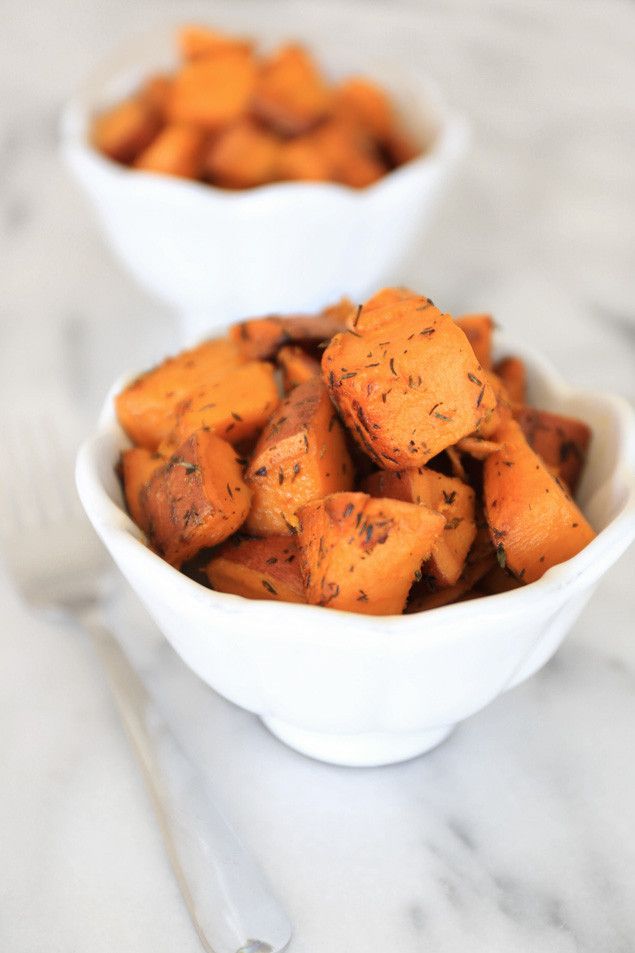
Disclaimer No. 1: It must be understood that the author of the articles on the Baby Food Encyclopedia website is not a medical staff, “I am not a doctor.” The information I share is based on my own experience. My goal is not to teach you how to eat or feed your child, but to talk about how we did it, what new things I learned or read. This expands the picture of Baby Food knowledge, gives you a glimpse of the whole process so you can decide if you like it or not.
Disclaimer No. 2 : However, the above does not cancel visiting a pediatrician. Before you start complementary foods, you need to get his professional opinion on the best way to introduce new foods for your baby. I also draw your attention to the fact that you need to look at the original date of the published articles, because some of the "best practices" may have changed. Always check with your child's pediatrician about complementary foods and their health.
Disclaimer #3: Keep in mind that every family is unique, every situation is also completely unique.


